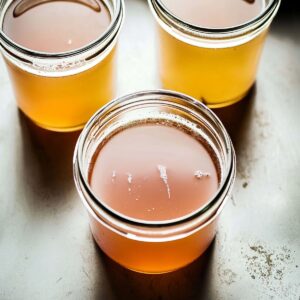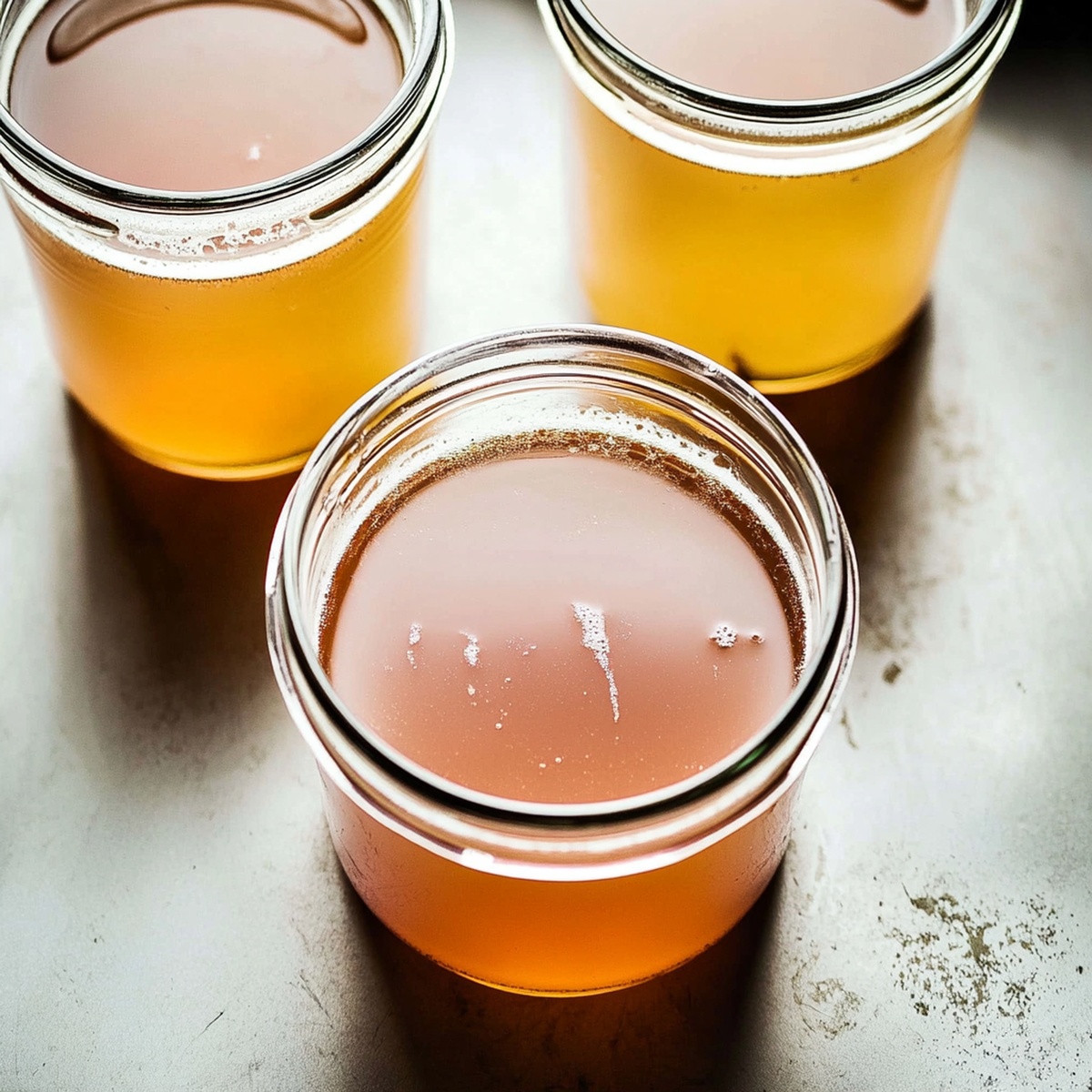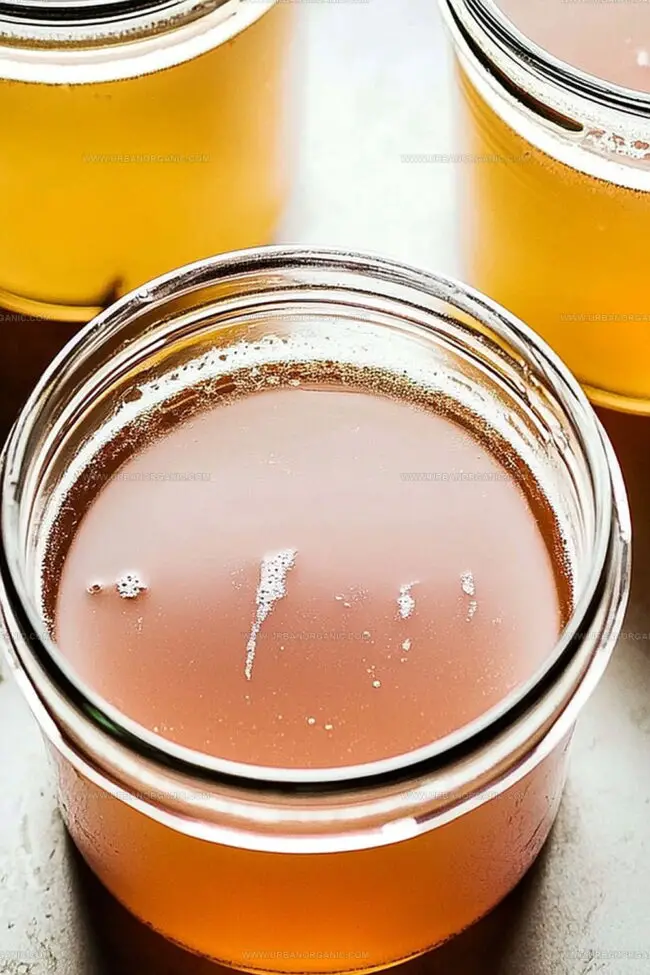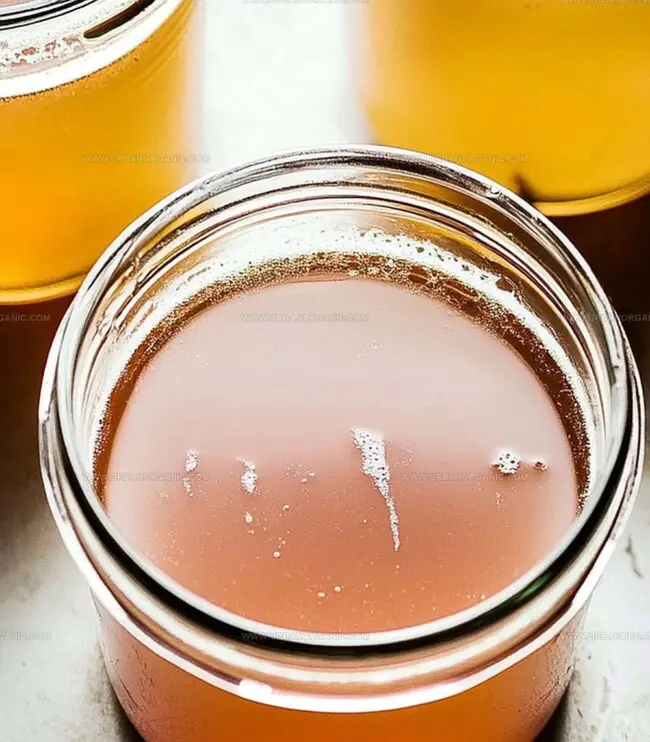Hearty Slow Cooker Bone Broth Recipe at Home
Crafting a nourishing slow cooker bone broth can revolutionize your kitchen wellness routine.
Bones simmering for hours create liquid gold packed with healing minerals and collagen.
Nutrient-dense broths offer incredible health benefits beyond traditional cooking methods.
Home cooks appreciate how minimal effort yields maximum nutritional impact.
This liquid delight transforms ordinary ingredients into a powerful wellness elixir.
Rich, deep flavors develop slowly, infusing your kitchen with comforting aromas.
Let this simple recipe inspire you to unlock remarkable culinary potential.
Why Bone Broth Is a Kitchen Essential
What Goes Into a Slow Cooker Bone Broth
Bone Base:Vegetable Support:Flavor Enhancers:Water:How to Simmer for Maximum Flavor
Step 1: Enhance Bone Flavor
Spread bones on a baking sheet and roast in the oven at 400°F for 25-30 minutes. This caramelizes the bones, creating a deeper, richer taste profile.
Step 2: Layer Ingredients
Add ingredients to the slow cooker:Fill the slow cooker with water, completely covering all ingredients.
Step 3: Slow Simmer
Set slow cooker to low heat and cook for 12-24 hours. Longer cooking time extracts maximum nutrients and minerals. Periodically remove foam and impurities surfacing on top.
Step 4: Strain Liquid Gold
Remove bones carefully from the slow cooker. Pour broth through a fine mesh strainer into a large container, catching all solid particles.
Step 5: Preserve and Chill
Allow broth to reach room temperature. Transfer to storage containers and refrigerate. Optional: Remove solidified fat layer from the top once chilled.
Broth Tips for a Rich, Nutrient-Dense Result
How to Cool, Store, and Use Later
What Dishes Go Well with Bone Broth
Flavor Add-ins for Health or Taste
FAQ for Bone Broth Beginners
Apple cider vinegar helps break down collagen and minerals from the bones, making them more easily absorbed when you drink the broth.
Yes, you can mix bones like chicken, beef, or turkey. Marrow bones, knuckles, and joints work best for extracting maximum nutrients and creating a rich, gelatinous broth.
Absolutely! A good bone broth will turn into a jelly-like consistency when refrigerated. This indicates high collagen content and shows you’ve extracted nutrients successfully.
A properly made bone broth should be clear, have a rich golden color, and have a deep, savory flavor. When cooled, it should have a wobbly, gel-like texture that indicates nutrient density.
Print
Slow Cooker Bone Broth Recipe
- Total Time: 24 hours 10 minutes
- Yield: 10 1x
Description
Hearty bone broth simmers slowly, releasing rich flavors that comfort and nourish the soul. Homemade liquid gold delivers deep nutrients and warmth, inviting you to savor each nourishing spoonful.
Ingredients
Bones and Meat:
- 23 lbs (900 g-1.4 kg) beef bones, chicken carcasses, or a mix (preferably with joints or marrow bones)
Vegetables:
- 1 large onion, quartered
- 2 carrots, roughly chopped
- 2 celery stalks, roughly chopped
- 4 cloves garlic, smashed
Seasonings and Herbs:
- 2 tablespoons apple cider vinegar
- 1 bay leaf
- 1 teaspoon whole black peppercorns
- Fresh herbs (e.g., thyme, rosemary, or parsley)
- 12 cups (2.8 liters) water
- Salt, to taste (optional)
Instructions
- Enhance bone flavor by roasting them in a 400F (200C) oven for 25-30 minutes until golden brown, intensifying the overall taste profile.
- Transfer roasted bones into the slow cooker, carefully layering with chopped vegetables, aromatic herbs, bay leaves, and a splash of apple cider vinegar for depth.
- Completely submerge ingredients with cool water, ensuring all components are fully covered within the slow cooker vessel.
- Configure slow cooker to low temperature setting, allowing the liquid to gently simmer and extract maximum nutrients over 12-24 hours, periodically removing any foam or impurities that surface.
- After extended cooking time, carefully extract and discard solid bone and vegetable remnants using a sturdy strainer or fine mesh sieve.
- Pour strained broth through a clean filter into a spacious container, capturing all rich, concentrated liquid while eliminating potential sediment.
- Allow broth to cool naturally to room temperature, then transfer to refrigerator for chilling.
- Once thoroughly cooled, optionally remove solidified fat layer from the broth’s surface for a clearer, leaner liquid.
Notes
- Enhance bone broth’s flavor by optional roasting bones before slow cooking, which caramelizes proteins and develops deeper, richer taste profiles.
- Maximize nutrient extraction by simmering bones low and slow for extended periods, allowing collagen, minerals, and amino acids to fully release into broth.
- Achieve crystal-clear broth by consistently skimming foam and impurities during cooking process, ensuring clean and pure liquid without cloudiness.
- Customize broth for dietary needs by selecting specific bone types like grass-fed beef, organic chicken, or wild-caught fish to match nutritional preferences and health goals.
- Prep Time: 10 minutes
- Cook Time: 12-24 hours
- Category: Drinks, Snacks
- Method: Slow Cooking
- Cuisine: American
Nutrition
- Serving Size: 10
- Calories: 40
- Sugar: 1 g
- Sodium: 10 mg
- Fat: 1 g
- Saturated Fat: 0.5 g
- Unsaturated Fat: 0.5 g
- Trans Fat: 0 g
- Carbohydrates: 2 g
- Fiber: 0.5 g
- Protein: 6 g
- Cholesterol: 0 mg




Jessica Martinez
Pastry Chef & Recipe Developer
Expertise
Organic Baking Techniques, Gluten-Free Recipe Development, Southwestern Dessert Specialties, Food Styling and Photography
Education
Santa Fe Community College (SFCC)
Jessica brings the sweet side to Urban Organic with her passion for baking and love for the Southwest. She trained at Santa Fe Community College and has built a career creating beautiful, gluten-free, and organic desserts that feel both nostalgic and new.
She believes baking should be fun, creative, and open to everyone, no matter your diet or skill level. Jessica’s recipes are simple enough to follow, but special enough to remember.